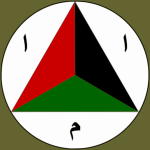Hobby Master HG3313 Afghan National Army T-55A Main Battle Tank - "White 364," Kabul, 1960s (1:72 Scale)
"There has not yet been a major ground offensive battle... There are, we know, negotiations going on between the opposition forces and the Taliban leadership for surrender."
- Peter Pace, retired four-star general in the United States Marine Corps who served as the 16th Chairman of the Joint Chiefs of Staff
 The T-54 and T-55 main battle tanks were the Soviet Union's replacements for the World War II era T-34 tank. The T-54/55 tank series is the most numerous in the world, and very widely employed, especially by former client states of the Soviet Union.
The T-54 and T-55 main battle tanks were the Soviet Union's replacements for the World War II era T-34 tank. The T-54/55 tank series is the most numerous in the world, and very widely employed, especially by former client states of the Soviet Union.
The T-54 and T-55 tanks are very similar and difficult to distinguish visually. Many T-54s were updated to T-55 standards. Soviet tanks were factory-overhauled every 7,000 km, and often given minor technology updates. Many states have added or modified tank equipment (India affixed fake fume extractors to its T-54s and T-55s, so that Indian gunners wouldn't confuse them with Pakistani Type 59s).
The T-54 can be distinguished by a dome-shaped ventilator on the turret front-right, and has a SGMT 7.62 mm machine gun in a fixed mount in the front of the hull, operated by the driver. Early T-54s lacked a gun fume extractor, had an undercut at the turret rear, and a distinctive "pig-snout" gun mantlet. The T-55's new turret has large D-shaped roof panels, visible from above.
Pictured here is a 1:72 scale replica of a Russian-built T-55A main battle tank employed by the Afghan National Army during the 1960s.
Sold Out!
Dimensions:
Length: 4 inches
Width: 1.5 inches
Release Date: October 2010
Historical Account: "Mountain Folk" - The Afghan National Army is a service branch of the Military of Afghanistan currently being trained by the coalition forces to ultimately take the role in land-based military operations in Afghanistan. Afghanistan's army was established in the 1880s when the nation was ruled by Emir Abdur Rahman Khan. Prior to that the army was mostly a combination of tribesmen and militia forces, as well as a special army force under the ruler of the country.
During the 1960s to the early 1990s, the Afghan army was trained and equipped by the Soviet Union. By 1992, the national army fragmented into regional militias under local warlords. This was followed by the Taliban rule in 1996, which had their own armed forces. After the removal of the Taliban in late 2001, the new Afghan National Army began to be created with the support of US and other NATO countries.







